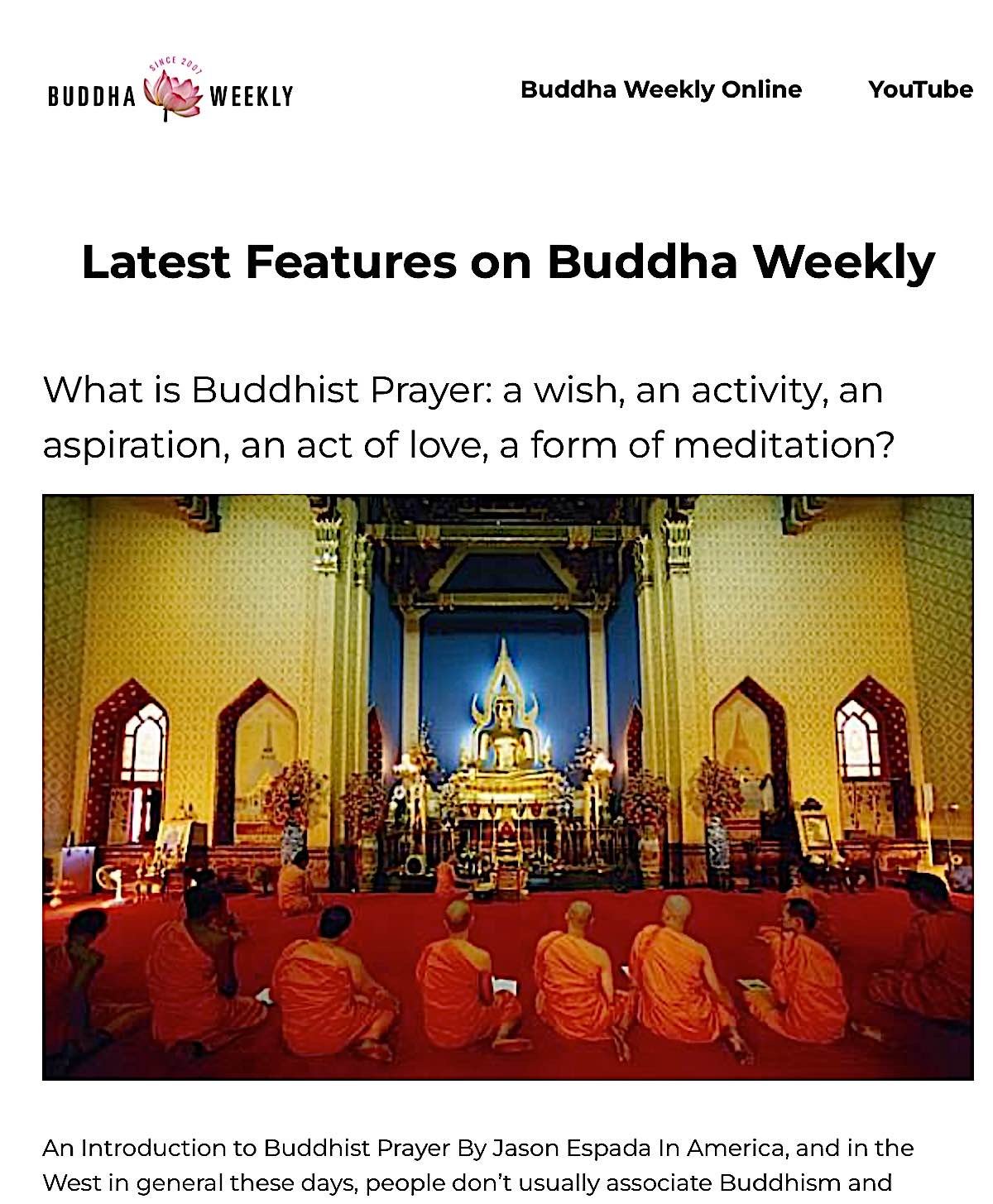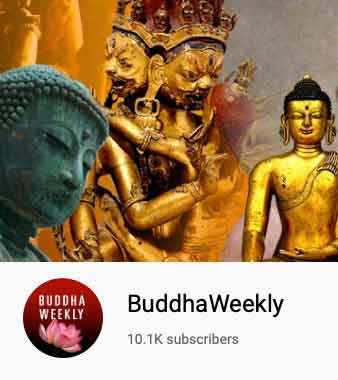Video: Wisdom Compassion & Power Mantras: the Thee Great Bodhisattvas 1 Hour Sanskrit chanting
The Sacred Sanskrit Mantras of the Three Lords of the World — Avalokiteshvara, Manjushri and Vajrapani, the Three Great Bodhisattvas — are among the most important practice mantras for many Buddhists. These syllables together represent the Wisdom, Compassion and Power of All the Buddhas. These three Bodhisattvas represent perfect wisdom and compassion and activity. They are the Great Protectors of the Sutras and the Dharma, and together represent the complete path.
Video:
Manjushri’s Wisdom Mantra is seven sacred syllables (sometimes called the Arapachana mantra Om Arapachana Dhi:
Om Ah Ra Pah Cha Na Dhi
Avalokiteshvara’s Compassion Mantra is six sacred syllables:
Om Mani Padme Hum
Vajrapani’s Powerful Mantra also six sacred syllables:
Om Vajrapani Hum
AVAILABLE ON BUDDHA WEEKLY’s MANTRA COLLECTION 1 album on most music streaming services: Spotify, Apple Music, iTunes, Instagram/Facebook, TikTok & other ByteDance stores, YouTube Music, Amazon, Pandora, Deezer, Tidal, iHeartRadio, Claro Música, Saavn, Boomplay, Anghami, KKBox, NetEase, Tencent, Qobuz, Joox, Kuack Media, Yandex Music (beta), Adaptr, Flo, MediaNet
On Apple Music: https://music.apple.com/us/album/mantra-collection-1/1691809507
On Spotify: https://open.spotify.com/album/0tvJoEF3wOIZvEdfv6GIo0
Manjushri represents the five wisdoms of the Buddhas, which help us to transform the five great poisons that cause suffering.
Avalokiteshvara represents the Mahayana Bodhichitta ideal of Karuna and Metta, Compassion and Love for all beings.
These are called the two “wings of the Bird of Enlightenment” but the actual “flapping of the wings is the activity, represented by Great Vajrapani.
Wisdom and Compassion manifest as Enlightened Activity. This is the Power of the Buddhas.
Chant along for one full hour these sacred syllables, while meditating on the three Bodhisattvas and what they represent.
#sanskritmantra #buddhistmantra #threebodhisattvas #Arapachana
More articles by this author

Supporting Members Video: 20th Saffron Red Tara 108 Times Sanskrit Mantra Dispels Epidemics and Disease

Ultimate Purity as a Practice: Vajrasattva – the only practice most people need and the most powerful healing and purification method in Vajrayana Buddhism

Ganapuja (Gathering Offering) and Ganachakra (Gathering Circle) or Tsog (Tsok): What is it? Why is the Offering Important? When to Celebrate?
Search
Latest Features
Please support the "Spread the Dharma" mission as one of our heroic Dharma Supporting Members, or with a one-time donation.
Please Help Support the “Spread the Dharma” Mission!

Be a part of the noble mission as a supporting member or a patron, or a volunteer contributor of content.
The power of Dharma to help sentient beings, in part, lies in ensuring access to Buddha’s precious Dharma — the mission of Buddha Weekly. We can’t do it without you!
A non-profit association since 2007, Buddha Weekly published many feature articles, videos, and, podcasts. Please consider supporting the mission to preserve and “Spread the Dharma." Your support as either a patron or a supporting member helps defray the high costs of producing quality Dharma content. Thank you! Learn more here, or become one of our super karma heroes on Patreon.
Lee Kane
Author | Buddha Weekly
Lee Kane is the editor of Buddha Weekly, since 2007. His main focuses as a writer are mindfulness techniques, meditation, Dharma and Sutra commentaries, Buddhist practices, international perspectives and traditions, Vajrayana, Mahayana, Zen. He also covers various events.
Lee also contributes as a writer to various other online magazines and blogs.














